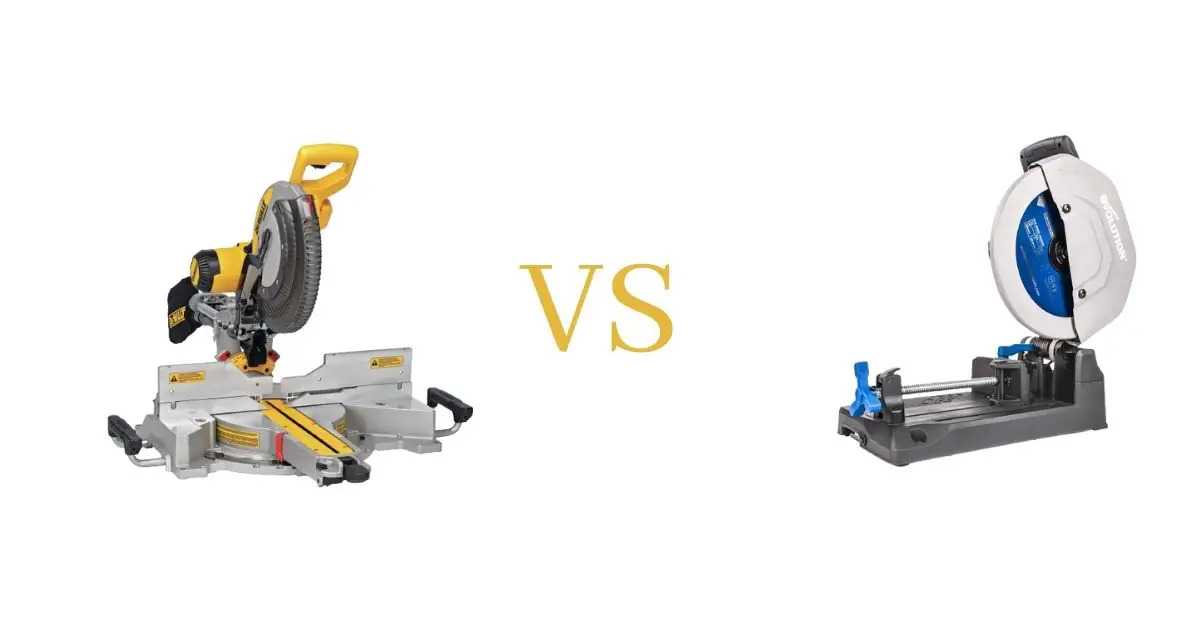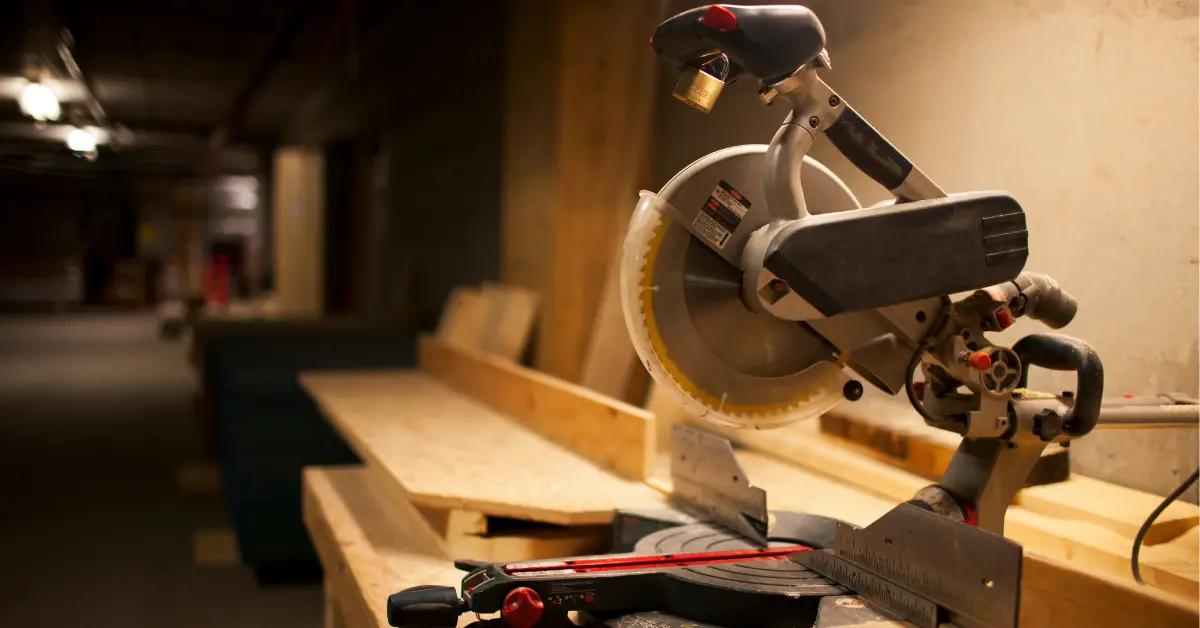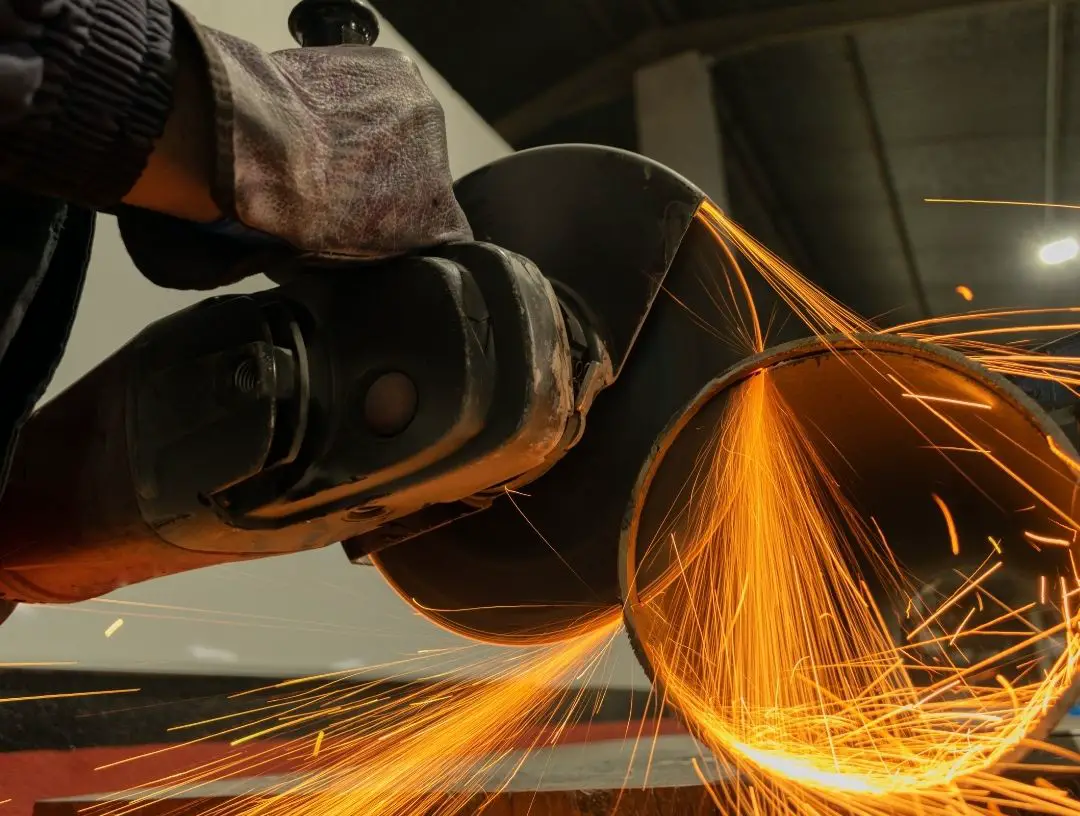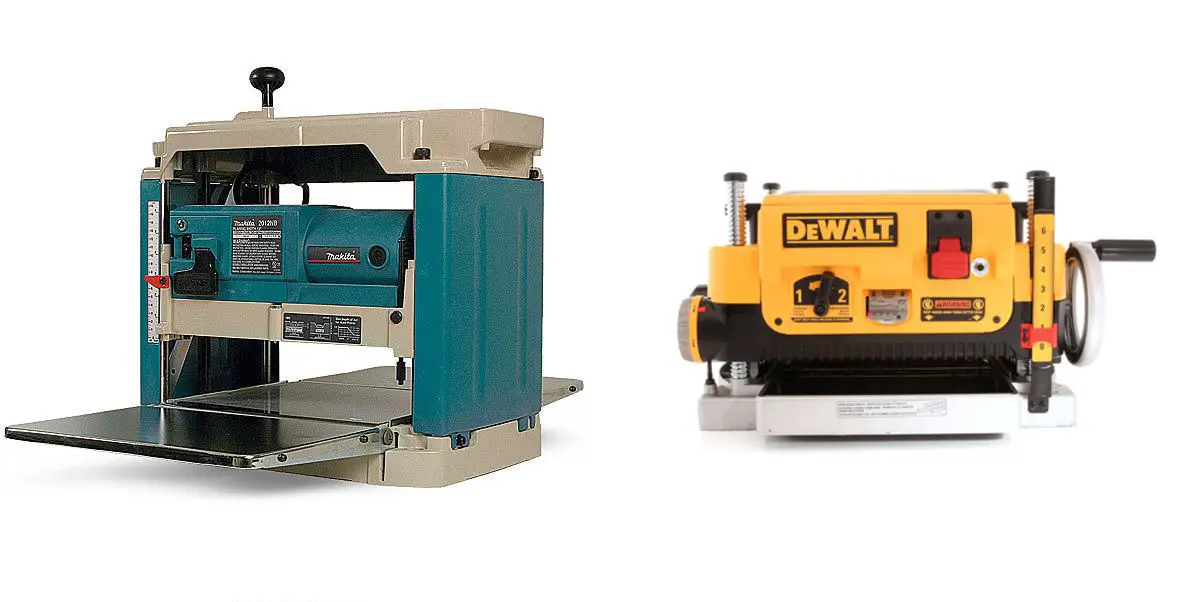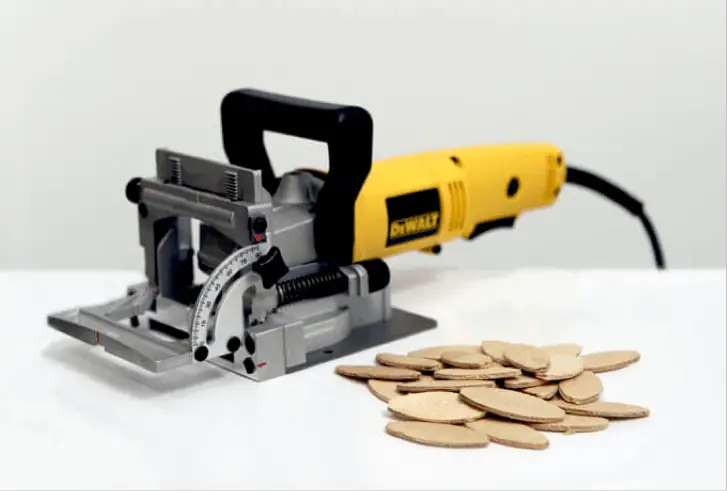Power Tools
Miter Saw vs Radial Arm Saw
We’d all like to equip our woodshops with every conceivable piece of equipment, but unfortunately, most of us have limited budgets. So, when comparing a miter saw vs. a radial arm saw, how do you know which of the two suits you best?
A direct comparison is necessary. Both tools have circular blades that can cut through wood of various thicknesses, but if your pockets aren’t that deep, you’ll have to settle for one. This guide is here to help you make the right decision.
The Difference Between Miter Saws and Radial Arm Saws
Cutting Depth
Radial arm saws possess a higher cutting depth. They’re better suited for cutting through the thick wood. On the other hand, Miter saws can cut through dimensional lumber but with comparatively lower cutting depths.
Portability
Miter saws are more portable than radial arm saws. For the latter, you’ll need to install a station from where it will operate. If you need something to lob around to different work sites, a miter saw is the better fit.
Cutting Variety
Although miter saws can provide four types of cuts (bevel, compound, double compound, and miter), radial arm saws are capable of a much larger variety of cuts.
Why Should You Get a Miter Saw?
It’s Easier to Use
The benefit of using a saw that’s less powerful is that you get more control. Miter saws are relatively powerful, but they’re not as powerful as radial arm saws. Therefore, they’re easier to control, which means you get more precision when cutting through different types of wood.
It’s also a good power tool since the blade’s rotation allows you to streamline different cuts, which even beginners can accomplish with relative ease.
It’s Available in Multiple Variations
Miter saws are perfect for users hunting for versatility. They come in several variations, which give you the ability to carry out additional operations.
It’s Safe
Most miter saws come equipped with safety guards and dust collectors. These features allow you to work on lumber without worrying about injury or damage to your workpieces.
Why Should You Get a Radial Arm Saw?
It Has Powerful Cutting Depth
A radial arm saw is better suited for cutting through thicker, tougher lumber thanks to a larger blade diameter. It’s suitable for simple woodworking, but it can go the extra mile whenever you need it to.
It is Versatile
Radial arm saws can rotate in multiple directions, and if it’s cutting versatility you’re after, you’ll not feel restricted by their highly maneuverable design.
It is Smaller
It is not smaller than a miter saw, but it typically needs less space than a table saw. So, if you’ve got limited space in your woodshop, yet you don’t want to sacrifice power for compactness, a radial arm saw is a great option.
It Provides a Wider Variety of Cuts
Aside from cross-cuts and rip cuts, which a miter saw can perform comfortably, radial arm saws can also cut dadoes and rabbets. This ability comes from its flexible depth adjustment, which lets you create L-shaped and U-shaped cuts across the width of lumber.
When Should You Get a Miter Saw?
When you need precision, a miter saw will serve you better than a radial arm saw. It offers nearly effortless precision, which you won’t achieve with a radial arm saw as it is harder to operate, especially for newbies.
When Should You Get a Radial Arm Saw?
When you need power, you’ll find that radial arm saws are far more practical. They offer a higher cutting depth, which means you can power through much thicker lumber than a miter saw will allow you to.
The Best Miter and Radial Arm Saws to Buy
DeWalt DWS780 12-inch Double Bevel Sliding Miter Saw
The DWS780 checks all the boxes as far as professional miter saws go. It can hold a 12-inch blade, slide to increase cut depth, and create double bevel (left and right), compound, and miter cuts.
You shouldn’t need any more convincing if you’re looking for a miter saw that does it all, but we’re going to go in-depth anyway.
Ease of use is guaranteed by CUTLINE technology, a blade-positioning system that adheres to the cut line automatically for unrivaled precision and visibility. When working in the dark, you can use the built-in LED light to create a shadow on the cut line for better visibility. Dust collection is also a package deal, and with this saw, up to 75% of the dust you generate will be conveniently disposed of.
With ten positive stops, the miter detent plate also improves cutting accuracy, which is why this is ideal for beginners. Even the bevel scale is oversized to make adjustments easy. It miters 60 degrees to the right and 50 to the left. On top of it all, it’s very compact and lightweight (only 58 pounds), so it’s easy to store and transport.
Evolution R2555SMS+ Multi-Material Radial Arm Saw
Packing an impressive hi-torque motor (15-amp) and capable of holding a 10-inch blade, there’s not much you can’t cut with this radial arm saw, which features adjustable depth settings, laser guidance, and a slide-rail, which increases its cut capacity. With this affordable power tool, you can cut more than just wood in more than one way. It supports cutting angles of up to 45 degrees, so it’s suitable for making joints too.
You can tilt it to make bevel cuts ranging from 0 – 45 degrees, not to mention 50 – 50-degree miter angles. There are quick stops at 0, 15, 22.5, 30, and 45 degrees, so it’s user-friendly as well. The blade can bevel 45 degrees in both directions (left and right), and a quick-release lever allows you to swap it out quickly when you need to cut other materials (or when you need to switch from cross-cuts to rip cuts.
Apart from the 10-inch blade, it also comes with a dust bag and a hold-down clamp for added stability. Laser guidance gives you much better cut accuracy while the high-end TCT blades cut more cleanly through materials of varying toughness. It also features a taller fence and an extended neck, features that allow you to work with larger workpieces.
Why You Should Trust Us
At Woodworking Tool Guide, we know one size doesn't fit all! We cater to every woodworker, from beginner to pro, with insights and recommendations tailored to your skill level, project needs, and budget. We take the guesswork out of choosing the right tools, whether you're tackling your first crafting a masterpiece for the ages. So grab your chisel, join our community, and let's build something amazing together!
Woodworking Tool Guide wasn't just born, it sprouted from a seed of passion for the craft. What started as a joyful exploration blossomed into a trusted online haven for fellow enthusiasts like you. We pour our love into meticulously chosen review selections, meticulous hands-on testing, and lab-backed insights, all to empower you with reliable, comprehensive information you can build on. So, grab your tools, trust our guidance, and let's build something beautiful together!
Passion-Driven Expertise
Our journey started with a shared love for woodworking. The team behind the Woodworking Tool Guide is comprised of individuals who are not just writers but passionate woodworkers themselves. This shared enthusiasm ensures that our content is crafted with a deep understanding of the craft and an authentic appreciation for quality tools.
Top Tool Guides Online
Woodworking Tool Guide has rapidly ascended to become one of the premier online destinations for tool guidance. Our commitment to excellence and the accuracy of our information has positioned us as a reliable source for both beginners and seasoned woodworkers seeking trustworthy advice on the best tools for their projects.
User-Centric Approach
Our content caters to every woodworker, from rookies just starting out to seasoned pros tackling intricate projects. We tailor our insights and recommendations to your skill level, project needs, and budget, ensuring you find the perfect tools to match your unique woodworking journey. So step into your workshop, grab your tool belt, and let Woodworking Tool Guide be your trusted companion as you craft your masterpieces.
Continuous Support and Innovation
Woodworking is an ever-evolving craft, and so is our commitment to supporting you. We are dedicated to bringing you the latest information on woodworking tools, techniques, and trends. Our team is actively working to expand our content and bring you more valuable insights, ensuring that you stay well-informed in your woodworking adventure.
Hands-On Experience
Ditch the endless research rabbit hole! At Woodworking Tool Guide, we believe in actionable advice, not armchair analysis. We get our hands dirty, putting every tool through its paces in real-world woodworking scenarios. Whether it's the precision of a table saw, the versatility of a router, or the tactile satisfaction of a handplane, we test for performance, durability, and user-friendliness. No more sifting through dry specs – we deliver practical insights you can trust to transform your woodworking dreams into reality.
Woodworking Tool Guide isn't just a review site, it's your trusted companion on the sawdust-filled path to woodworking mastery. Our expert team, led by veteran David Jones, meticulously tests and explains tools in terms you understand. We cut through the jargon, bias, and confusion with real-world insights and honest evaluations. Join our passionate community, where decades of experience, cutting-edge knowledge, and shared love for the craft come together to guide you every step of the way. So grab your chisel, buckle up, and let's embark on this exciting woodworking adventure, together!

